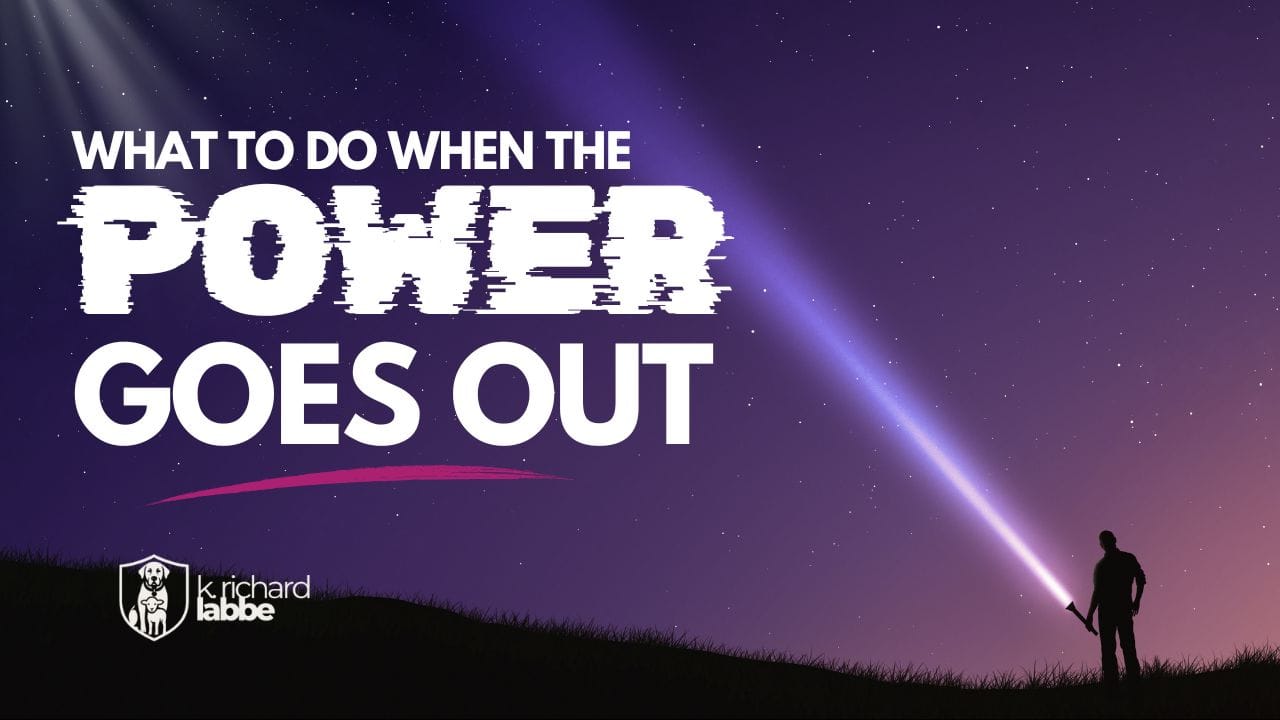When the Power Goes Out: A Calm Guide to Getting Ready for Summer Storms
You don’t have to be a prepper to be prepared. With a few simple steps, you can turn a summer power outage from a crisis into a minor inconvenience. Let’s build your storm game plan—one habit at a time.

What Happened: A 36-Hour Reminder
Not long ago, straight-line winds barreled through our area. Within minutes, trees were down, traffic lights went dark, and half our town lost power. At our house, it was 36 hours before the lights came back on. In nearby neighborhoods, it was nearly a week.
We weren’t hit by a hurricane. There was no national emergency. Just a localized summer storm—common, quick, and disruptive.
That’s the kind of event this post is about.
We're not talking about disaster-level evacuations or hurricane shelters. We're talking about realistic, region-specific steps you can take today to be more ready for the kinds of power outages that sneak up on all of us—especially in the warmer months.
Why Summer Power Outages Are on the Rise
According to the U.S. Energy Information Administration, the average American now experiences seven or more hours of power outages per year, and summer storms are a leading cause. Add in aging infrastructure, increased energy demand, and severe weather patterns across much of the country, and the risk grows.
And the cost? The USDA estimates that losing power for just two days can spoil over $200 worth of food—and that’s before you count missed work, dead devices, or the scramble to help loved ones.
What Basic Readiness Looks Like (and Why It Matters)
Being “ready” doesn’t mean building a bunker. It means being the calm one in your home when the lights go out. It means thinking ahead, so you’re not scrambling when your fridge shuts down or your phone’s at 4%.
If you live in the Northeast or Midwest, summer storms often bring high winds, lightning, and short-term blackouts. You might lose power for a few hours—or overnight—because of downed trees or local equipment failure.
In the South, power outages are more likely to come from heavy thunderstorms, extreme heat (which can overload the grid), or tropical systems that bring rain but no formal disaster warning.
Out West, especially in places like California, planned power shutoffs and wildfire risk can interrupt service even when the skies are blue. That means readiness isn’t just for “stormy” regions.
So how do you prepare?
Start with these four areas: light, food, communication, and care.
A Practical, Calm Walkthrough
Let’s begin with light.
When the power goes out, the first thing you feel is disoriented. You reach for a switch—and nothing. It’s a small thing, but disconnection from light can shake you. That’s why we keep flashlights in easy-to-reach places—one per floor, with tested batteries. Not candles. Not old lanterns. Flashlights. Simple and safe.
Next is food.
Think about what’s in your fridge and freezer. Could you go 24–48 hours without opening them? Probably not. So, set aside a small stash of shelf-stable foods that don’t require cooking: peanut butter, protein bars, crackers, tuna. FEMA recommends a gallon of water per person per day, for at least three days. That’s a good rule of thumb—even if you’re not bracing for a major event.
Now think communication.
When the grid’s down, your Wi-Fi goes with it. Your phone won’t last forever. That’s why we recommend keeping a couple of fully charged battery packs on hand, especially if you rely on your phone to stay in touch with elderly parents or emergency services. A hand-crank or battery-powered radio is also a smart addition. It can keep you informed even when your devices don’t work.
Finally, consider care.
Does anyone in your home use a medical device that requires power? A CPAP? A refrigerated medication? Think now—before the next storm—about what you’ll need to keep them safe. That might mean a small portable generator or a plan to relocate temporarily if needed.
Click here for our Power Outage Preparedness Checklist.
Regional Tips for Everyday Households
- Northern regions (Great Lakes, New England):
Prepare for lightning-related outages and wind damage. Storms often knock out local substations. Stay off roads if traffic lights are down. - Southern states (Texas, Gulf Coast, Southeast):
Summer outages often follow heatwaves or pop-up storms. Keep coolers and ice packs ready to protect meds and food during grid failures. - Western U.S. (California, Southwest):
Prepare for intentional outages during fire season. Set weather alerts for red flag warnings and plan for high temps without air conditioning. - Mountain regions (Colorado, Utah, Appalachians):
Afternoon storms are common. Outages can happen quickly. Roads may be affected by debris or flash floods—keep shoes, lights, and a car charger close by.
What to Do Today
Don’t overhaul your house. Just take the next wise step.
Here’s what that might look like:
- Test one flashlight and put it where you’d actually use it.
- Buy or charge one battery pack for your phone.
- Set aside three easy-to-eat meals that don’t require cooking.
- Write down two emergency contacts—and store a paper copy in your wallet.
- Talk with your family or small group about where you’d go if the power stayed out for more than a day.
Preparedness doesn’t have to be complicated. It just has to be intentional.
Stewardship Starts with Readiness
We’re not called to panic. We’re called to prepare. Caring for our homes, the people we love, and the things God has entrusted to us starts with quiet, steady action—not fear.
Being ready for a power outage is an act of love. It says, “I want to take care of what matters, even when life gets unpredictable.”
Final Word: Prepared, Not Paranoid
You don’t need to chase hurricanes or stockpile MREs. Just be ready for the kind of outage that hits your area, your town, and your street.
Be the calm presence your home needs.
Prepared, not paranoid. That’s how we weather the storm.
Stay safe. Be ready. Online and off.
Every effort has been made to ensure the accuracy and reliability of the information presented here. While Labbe Media, LLC strives to offer clear, well-researched guidance, this content is intended for educational purposes only and isn’t a substitute for professional advice tailored to your situation. We encourage you to use this material as a starting point—and to double-check details and consult trusted professionals when making important decisions.
